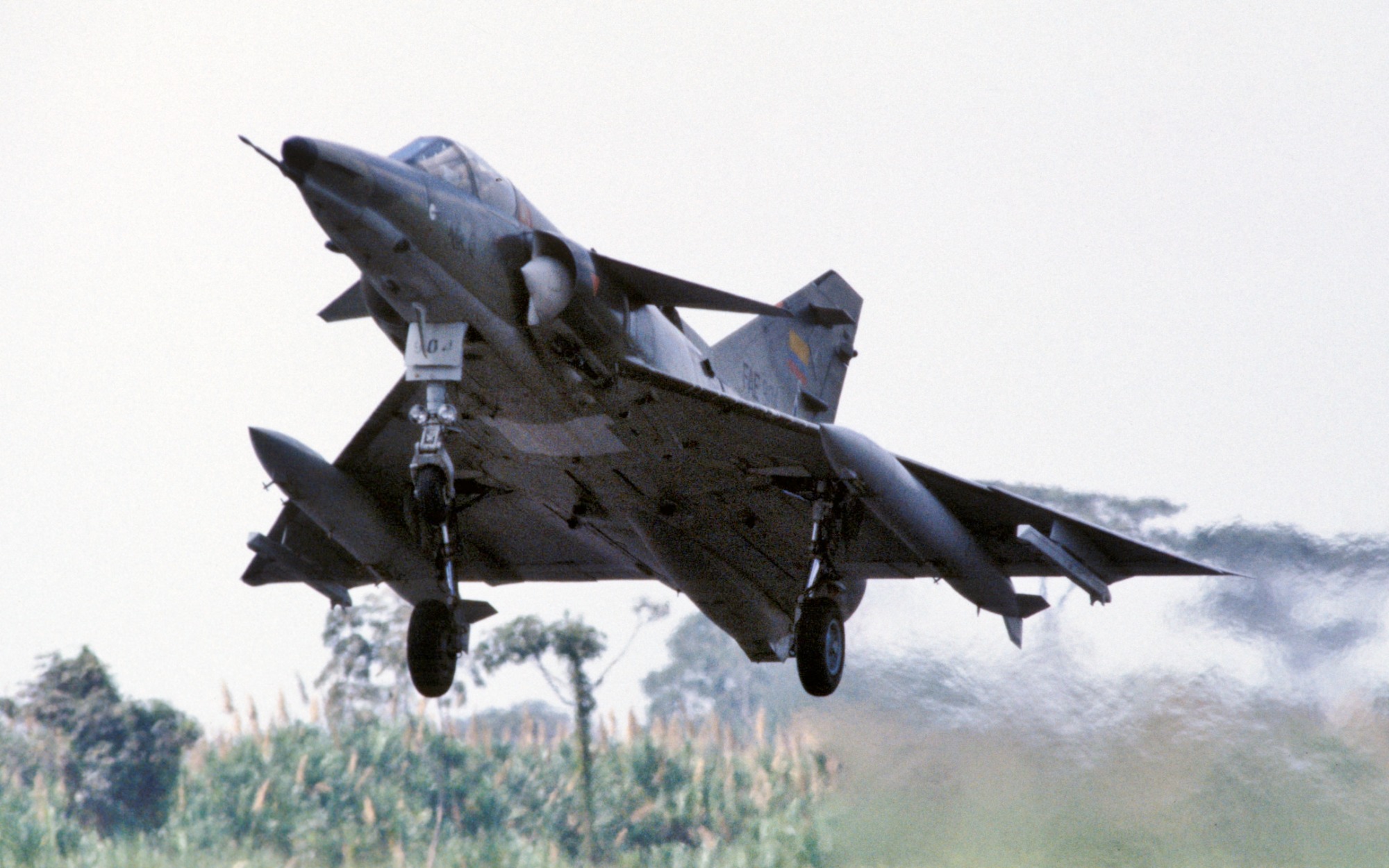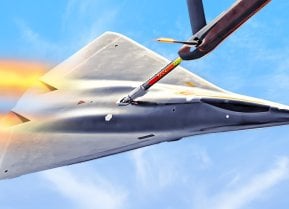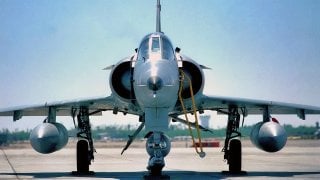Kfir: The Israeli Fighter Jet No Nation Dared Battle in the Sky
The Kfir, though limited in combat, was adopted by the U.S. Navy and Marine Corps in the 1980s for adversary training, designated as the F-21A.
Summary and What You Need to Know: French influence significantly shaped the Middle East, with a lasting impact on Lebanon and later on Israel's military development. Though under the British Mandate, Israel initially relied on France for advanced military aircraft, like the Mirage 5. However, a French arms embargo in 1967 led Israel to develop its own fighter, the Nesher, and later the more advanced Kfir, which incorporated elements of the Mirage but featured significant upgrades.
-The Kfir, though limited in combat, was adopted by the U.S. Navy and Marine Corps in the 1980s for adversary training, designated as the F-21A.
How a French Embargo Led to Israel's Development of the Kfir Fighter Jet
French influence can be seen throughout the Middle East. French colonialism had a lasting impact on the society, culture, and even politics of the region. This is certainly true in Lebanon, which was administered by the French after the Partition of the Ottoman Empire –as it became part of the French Mandate.
However, another French influence was seen in Lebanon's neighbor to the south decades later. Though what is today the modern State of Israel was under the British Mandate, Paris was the main supplier of Israeli weapons.
In the late 1960s, the French-based Dassault received a request from the Israeli Air Force (Chel Ha'Avir) for a front-line supersonic attack aircraft that would be optimized for use in the Middle East. The IAF had sought a Mirage III variant that lacked the air intercept radar and some of its avionics, which were located behind the cockpit. The rationale was that the weather in the region was mostly clear and sunny; the radar could be replaced with more fuel storage for attack missions. It was also meant to reduce maintenance costs.
The program seemed to have merit and led to the development of what would become the Dassault Mirage 5, with Israel receiving 50 of the fair-weather, delta-winged ground-attack aircraft. In 1968, Dassault even completed production of the aircraft – but an arms embargo was placed upon its once close Middle Eastern ally by the French government in 1967 following the Six-Day War, which prevented the deliveries from taking place.
The aircraft was redesignated the Mirage 5F and the 50 produced were delivered to the French Air Force (the Armée de l'Air).
That led to Israel's decision to become more self-sufficient and to build its own combat aircraft, which was produced with what can be described as some "unofficial French cooperation," as well as from the theft of key documents by Israeli agents. This resulted in the Israel Aircraft Industries (IAI) producing the Nesher (Eagle), a close copy of the Mirage 5. The Nesher first flew in 1969, and 69 were produced through 1974.
Enter the Kfir Fighter from Israel
However, there were several limitations with the Nesher, notably it being underpowered, which led to the conversion of one to a prototype Kfir (Lion Cub). Compared with the Mirage 5, the Kfir-C2 was different in three main ways – its propulsion, aerodynamics, and avionics.
According to the U.S. Naval Institute, the performance of the IAF aircraft was significantly enhanced through the use of an Israeli-built version of the General Electric J79 turbojet engine, which also powered the McDonnell-Douglas F-4 Phantom.
The J79 engine was slightly heavy but considerably shorter and more powerful. The main aerodynamic change was the addition of a swept fixed canard foreplane high on each inlet duct ahead of the main wing roots – which improved handling qualities, and maneuverability under virtually all conditions. In particular, it was noted for reducing takeoff and landing distances, while increasing sustained rate of turn at all heights and Mach numbers, and it further reduced gust response in the lo attack role.
In what should be seen as an unexpected decision given the original specifications requested by the IAF, the delta-wing aircraft was fitted with the Elta EL/M-2001 fire-control radar that provided a look-down/shoot-down capability. The fighters were armed with two Rafael-built DEFA 553 30-mm cannons in their wing roots and could carry two air-to-air missiles.
Instead of merely being an attack aircraft, the Kfir evolved into a multi-role air-combat fighter, attack aircraft, recon platform, and in two-seat form, as an EW aircraft and conversion trainer. Notably, almost every equipment item in the aircraft was of Israeli manufacture.
The Kfir first entered service in 1974, and two squadrons were equipped with the 27 production models. Despite being seen as a capable warbird, its combat history was limited. The aircraft's first recorded combat action took place on November 9, 1977, during an Israeli air strike on a training camp at Tel Azia, in Lebanon.
The only air victory claimed by a Kfir during its service with the IAF occurred on June 27, 1979, when a Kfir C.2 shot down a Syrian MiG-21 with Shafrir-2 air-to-air missiles.
Adopted by the U.S. Navy
A largely forgotten part of the Kfir story is that during the 1980s, the United States Navy and United States Marine Corps leased around two dozen of the Kfir C.1, which were officially designated the F-21A, and modified for use as unarmed adversaries for "dissimilar" aircraft air-combat maneuver (ACM) training. Flying against dissimilar planes helped fighter pilots hone their skills.

As reported by the U.S. Naval Institute, a three-part agreement eventually was reached. It called for the Kfir C.1s to be "leased" to the U.S. Navy at no cost to the United States, while the U.S. government ensured that the aircraft were maintained to Israeli Air Force standards so that, if necessary, they could be returned for service in Israel. Finally the agreement stated that the U.S. Navy would provide certain equipment on a similar free-lease basis to Israel.
However, it is believed that the Israelis did not request any Navy equipment under this provision.
The Kfir became one of just two foreign planes flown by the U.S. Navy and Marine Corps during the Cold War – with the other being the British-developed Harrier.
Author Experience and Expertise: Peter Suciu
Peter Suciu is a Michigan-based writer. He has contributed to more than four dozen magazines, newspapers, and websites with over 3,200 published pieces over a twenty-year career in journalism. He regularly writes about military hardware, firearms history, cybersecurity, politics, and international affairs. Peter is also a Contributing Writer for Forbes and Clearance Jobs. You can follow him on Twitter: @PeterSuciu.
You can email the author: [email protected].
Image Credit: Creative Commons.


